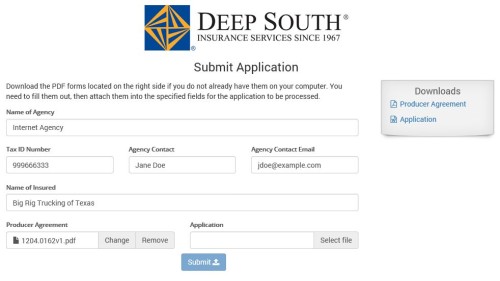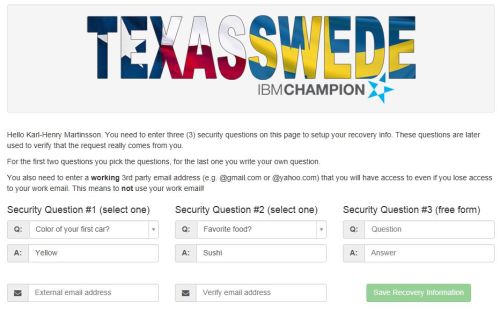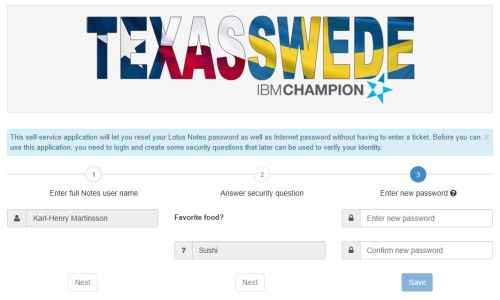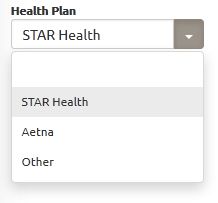In my MWLUG presentation (as well as in a couple of entries on this blog) I talk about how you can access Domino data from a regular webpage using jQuery and a Lotusscript agent returning data as JSON. The issue with this solution is that the web page must be on the same web application path as the Domino agent. You can’t do what’s known as cross-domain Ajax.
For example if the Domino server is domino.texasswede.com but you have the webpage hosted at www.texasswede.com, it will not work. The security in Javascript does not allow calls across servers like that. There is however an easy solution, and it is called JSONP. What you do is to return not JSON but a call-back function with the JSON data as the argument.
So instead of returning this:
{ "firstName":"Karl-Henry", "lastname":"Martinsson","email":"texasswede@gmail.com" }you would have the Lotuscript agent return this:
personCallBack({ "firstName":"Karl-Henry", "lastname":"Martinsson","email":"texasswede@gmail.com" })Let’s assume we call the agent GetPersonData.jsonp. On the calling side (in the jQuery code) you would then use this code:
$.ajax({
url : "http://domino.texasswede.com/database.nsf/GetPersonData.jsonp?OpenAgent",
dataType:"jsonp"
});Finally you write the Javascript call-back function that will accept the data:
function personCallBack(data) {
$("#firstName").html(data["firstName"]);
$("#lastName").html(data["lastName"]);
$("#emailAddress").html(data["email"]);
}You can of course make this as advanced as you like but this is the basics. I have updated the JSON class I use for stuff like this to include a method to return JSONP. The new function is called SendJSONPToBrowser() and takes a string with the name of the call-back function as argument, for example like this:
Call json.SendJSONPToBrowser("personCallBack")Below is the updated class (if you downloaded my sample database from MWLUG you have the older version of it). Enjoy!
%REM
Library Class.JSON by Karl-Henry Martinsson
Created Oct 9, 2014 - Initial version
Updated Nov 6, 2015 - Added JSONP support
Description: Class to generate simple JSON from values
%END REM
Option Public
Option Declare
Class JSONdata
Private p_json List As String
Public Sub New()
'*** Set default value(s)
me.p_json("ajaxstatus") = ""
End Sub
%REM
Property Set success
Description: Set success to true or false
%END REM
Public Property Set success As Boolean
If me.success Then
Call me.SetValue("ajaxstatus","success")
Else
Call me.SetValue("ajaxstatus","error")
End If
End Property
%REM
Property Get success
Description: Not really used...
%END REM
Public Property Get success As Boolean
If me.p_json("ajaxstatus") = |"success"| Then
me.success = True
Else
me.success = False
End If
End Property
%REM
Sub SetMsg
Description: Set msg item
%END REM
Public Sub SetMsg(message As String)
Call me.SetValue("msg",message)
End Sub
Public Sub SetErrorMsg(message As String)
Call me.SetValue("errormsg",message)
me.success = False
End Sub
Public Sub SetValue(itemname As String, value As String)
Dim tmp As String
Dim delimiter As String
'*** Check for quote (double and single) and fix value if needed
tmp = Replace(value,Chr$(13),"<br>")
tmp = FullTrim(Replace(tmp,Chr$(10),""))
If InStr(tmp,|"|)>0 Then
If InStr(tmp,|'|)>0 Then
tmp = Replace(tmp,|"|,|"|)
delimiter = |"|
Else
delimiter = |'|
End If
Else
delimiter = |"|
End If
'*** Store value with delimiter in list
me.p_json(itemname) = delimiter & tmp & delimiter
End Sub
Public Sub SetData(itemname As String, value As String)
'*** Store value in list
me.p_json(itemname) = value
End Sub
%REM
Function GetJSON
Description: Return a JSON object as text
%END REM
Function GetJSON As String
Dim json As String
'*** Opening curly braces + CR
json = "{" + Chr$(13)
'*** Loop through all list elements and build JSON
ForAll j In me.p_json
json = json + |"| + ListTag(j) + |":| + j + "," + Chr$(13)
End ForAll
'*** Remove the comma after the last item
json = Left$(json,Len(json)-2) + Chr$(13)
'*** Add closing curly bracket and return JSON
json = json + "}"
GetJSON = json
End Function
%REM
Sub SendToBrowser
Description: Print JSON to browser, with correct MIME type
%END REM
Public Sub SendToBrowser()
'*** MIME Header to tell browser what kind of data we will return (JSON).
'*** See http://www.ietf.org/rfc/rfc4627.txt
Print "content-type: application/json"
Print me.GetJSON
End Sub
%REM
Sub SendJSONPToBrowser
Description: Print JSON to browser, with correct MIME type
%END REM
Public Sub SendJSONPToBrowser(callbackFunction As String)
'*** MIME Header to tell browser what kind of data we will return (Javascript).
'*** See http://www.rfc-editor.org/rfc/rfc4329.txt
Print "content-type: application/javascript"
Print callbackFunction + "(" + me.GetJSON + ")"
End Sub
End Class




